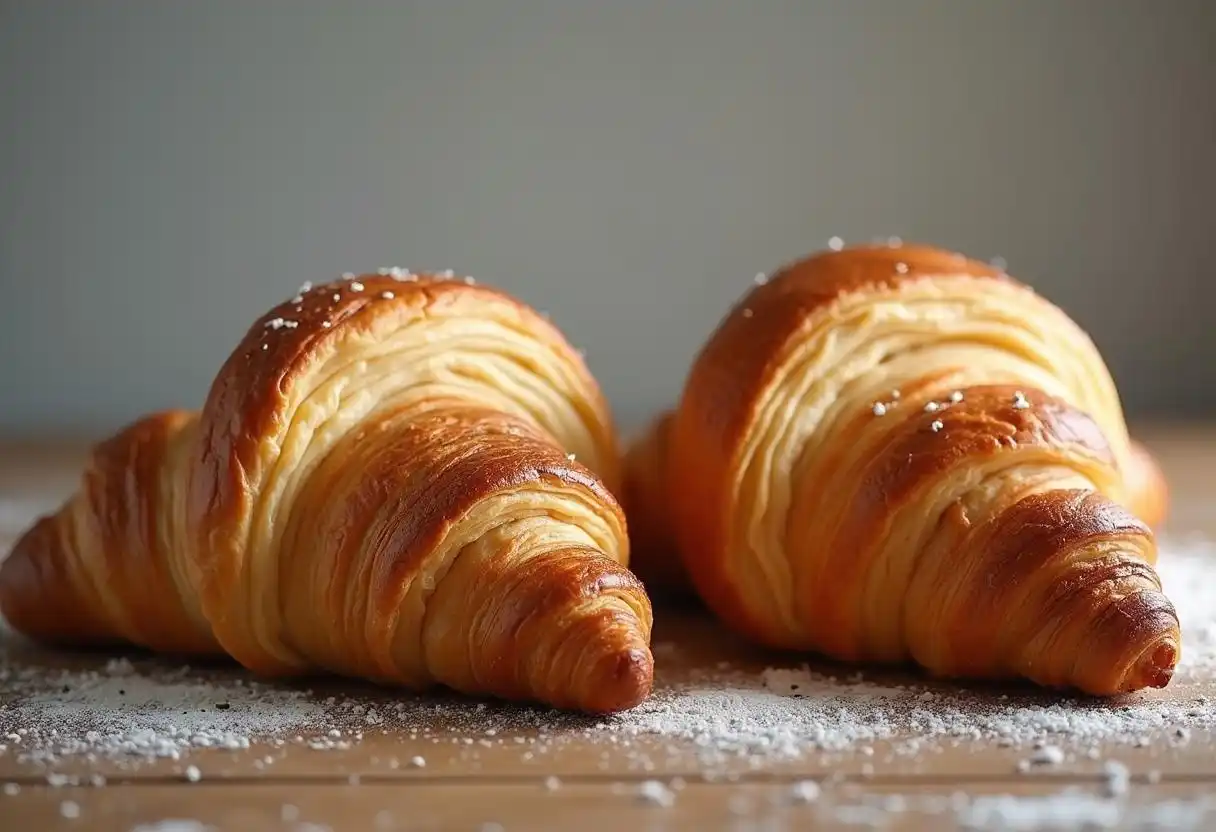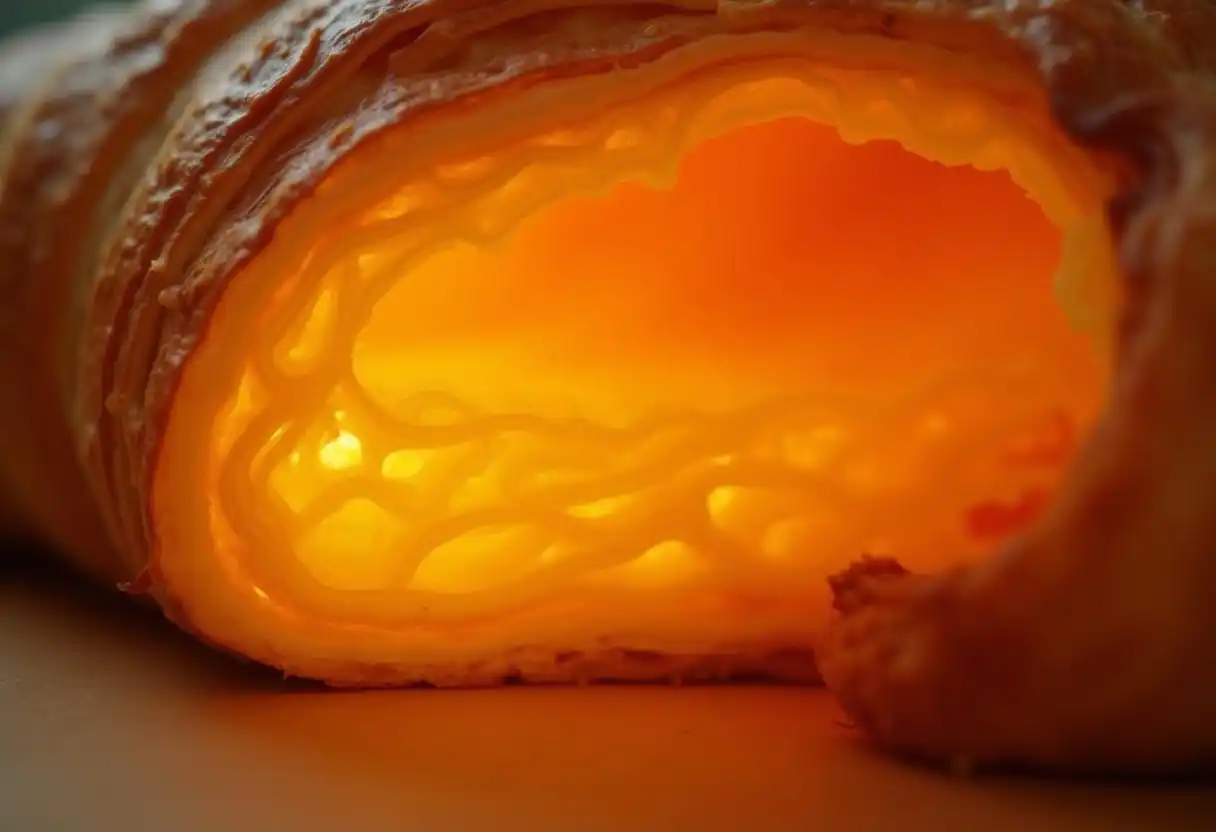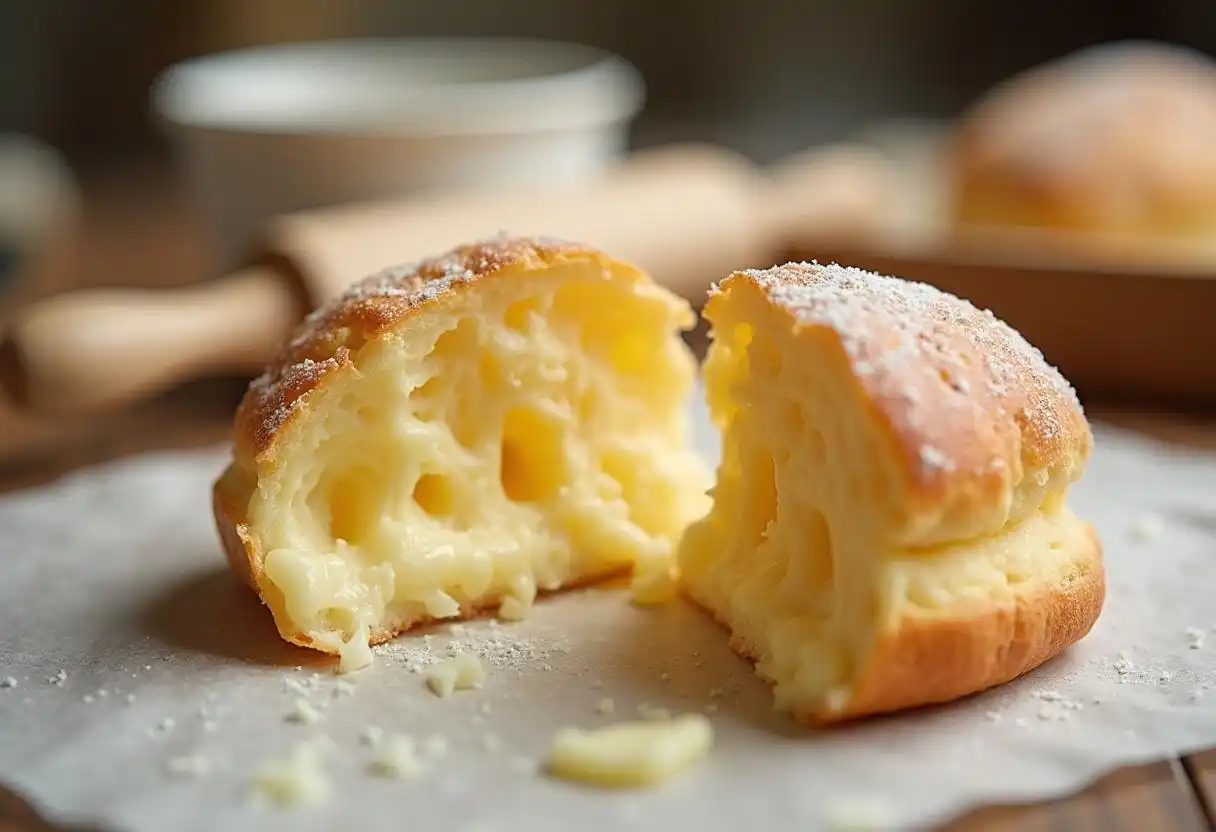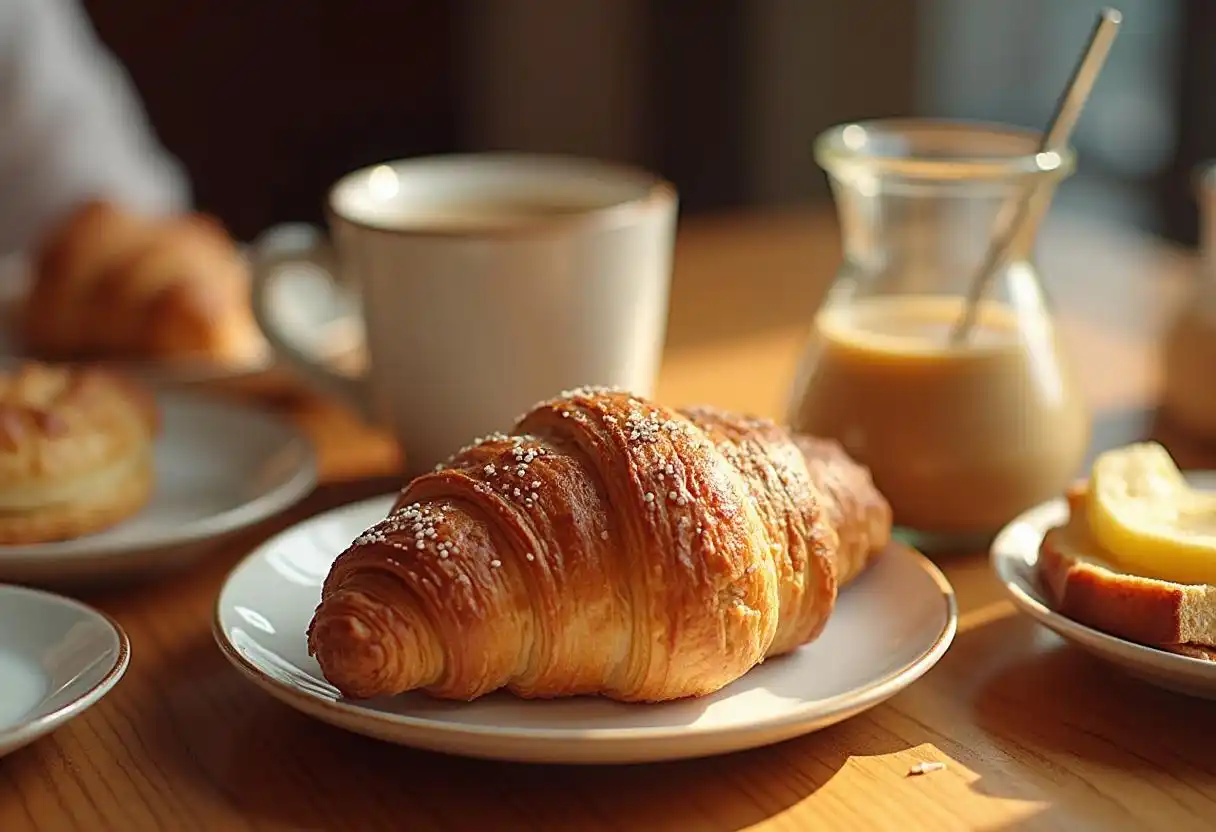Hey there, pastry pals! Ever stood at a bakery counter, maybe with a kid tugging at your sleeve asking for “the curly one,” and thought, “Wait, is that a croissant or… something else?” Mamma mia, you are not alone! Croissants and Gipfeli are like the Olsen twins of the pastry world – similar-looking crescent shapes, both flaky and buttery in their own ways, both totally delicious. But beyond that first glance, understanding the differences between croissants and Gipfeli reveals two unique treats with their own histories, flavors, and textures. My husband, bless his goofy heart, probably thinks they’re identical, but Nonna always said, “Pay attention to the details!” So, let’s put on our detective hats (and maybe grab a coffee) and explore the wonderful world of these beloved baked goods. We’ll uncover all the yummy details that make them special.
Origins and History
Okay, story time! Where did these beauties come from? Knowing their background really helps us appreciate the differences between croissants and Gipfeli.
- French Roots of the Croissant: Ah, the croissant! Chic, elegant, and oh-so-French. Its ancestor is thought to be the Austrian “kipferl,” a simpler little crescent roll. But leave it to the French to take it, add a ton of butter, master that incredible flaky layering, and turn it into a global superstar. This lighter, butter-laden version really took off in 19th-century Paris and became the symbol of French breakfast. Honestly, can you even picture Paris without picturing a croissant? Its fame just keeps growing!
- Swiss Creation of Gipfeli: Meanwhile, over in Switzerland, the Gipfeli was taking shape. Also inspired by that Austrian kipferl, the Swiss version evolved differently. It’s generally thought of as more of an everyday staple, less of a fancy treat than its French cousin. You’ll find Gipfeli everywhere in Switzerland – it’s just part of the daily routine, like grabbing coffee on your way to work. It holds a cozy, beloved spot in Swiss food culture. These origin stories already hint at some key differences between croissants and Gipfeli.
Cultural Significance
Now, let’s see how these pastries fit into daily life in their home countries. This cultural vibe check definitely highlights the differences between croissants and Gipfeli.
- Croissants in French Culture: In France, a croissant isn’t just breakfast; it’s an experience. It’s a symbol, really. Enjoyed slowly, usually with a strong coffee (café au lait for me!), it’s a morning ritual. You see them everywhere, from tiny neighborhood boulangeries to posh pâtisseries. It’s woven into the social fabric – a little bite of affordable luxury.
- Gipfeli in Swiss Culture: In Switzerland, the Gipfeli is more like your reliable best friend. It’s a bakery staple, enjoyed pretty much any time. Sure, it’s great for breakfast with coffee, but it’s just as common as a mid-morning snack or an easy afternoon treat. It’s less fanfare, more everyday comfort. It perfectly represents that Swiss blend of quality and practicality, showing another angle on the differences between croissants and Gipfeli.
Wherever you are, remember basic food safety! Always good to check out the USDA’s food safety guidelines.
Ingredient Differences
Okay, let’s peek under the hood – what actually goes into these things? The ingredients are super important for understanding the differences between croissants and Gipfeli.
Croissant Ingredients
Croissants go big on the butter! The dough itself is fairly simple: usually all-purpose flour, yeast, water, salt, a touch of sugar. But the star? BUTTER. Lots of high-quality butter is crucial for creating those whisper-thin, flaky layers through lamination. That high fat content is what gives croissants their incredible richness and signature taste.
Gipfeli Ingredients
Gipfeli dough, on the other hand, is typically a bit lighter and often includes a bit more sugar, giving it a subtle sweetness. The ingredients are similar – flour, yeast, water, salt, sugar – but usually with less butter overall compared to a croissant. The focus isn’t solely on extreme flakiness, but rather on a softer, tender texture with a pleasant, slightly sweet, buttery kiss.
Preparation Techniques
How are these pastries actually made? This is where the magic (and a lot of the work!) happens, and it really drives home the differences between croissants and Gipfeli.
Croissant Laminating Process
Ah, lamination – the heart and soul of a true croissant! This is a careful, patient process. You basically wrap a block of cold butter in dough, then roll it out, fold it like a letter, chill it, and repeat. And repeat. And repeat! It takes skill and time (definitely not a quick Tuesday morning bake for me!). This meticulous layering creates hundreds (!!) of distinct layers of dough and butter. When baked, the water in the butter creates steam, puffing up those layers into that iconic airy, shatteringly flaky texture. Curious about the technique? You can learn more about the secret to a good croissant or even the secret to puff pastry (which uses a similar idea).
Gipfeli Folding Technique
Gipfeli making is generally less intense. While there’s usually some folding involved to build in layers, it’s typically not as extensive or precise as croissant lamination. The dough is rolled, maybe folded a couple of times, then shaped. This results in a lovely pastry, yes, but one that’s softer and a bit denser than a croissant. It’s a more straightforward process, making it a bit more approachable for home bakers (like me!).
Texture and Flavor Profiles
Okay, let’s talk about the best part: eating them! The taste and feel are where you really experience the differences between croissants and Gipfeli.
Flaky and Rich Croissants
Bite into a good croissant, and you get that satisfying crunch followed by airy, delicate layers that practically melt in your mouth. The flavor is unmistakably rich, buttery, and just heavenly. It’s decadent, light yet substantial, and leaves you reaching for another piece (and maybe needing a napkin!).
Light and Subtle Gipfeli
A Gipfeli offers a softer bite. It’s more tender, maybe a little chewier, and has a gentle, subtle sweetness. The buttery flavor is there, but it’s less intense, allowing the slightly sweet dough flavour to come through more. It feels comforting and less dramatic than a croissant – perfect for an everyday treat.
Visual Appearance
Can you spot the difference just by looking? Sometimes! Visual clues can help distinguish the differences between croissants and Gipfeli.
Croissant Shape and Color
Classic French croissants usually have that pronounced, elegant crescent curve. They bake up to a beautiful deep golden-brown, often with clearly visible flaky layers on the outside and a nice sheen from an egg wash.
Gipfeli’s Smaller Size
Gipfeli are often a bit smaller and look more compact. Their crescent shape might be less curved, sometimes almost straight. They can be a lighter golden color and might have a less glossy, more matte finish compared to a croissant.
Nutritional Comparison
Alright, let’s talk nutrition for a sec (don’t worry, I won’t lecture!). This is another area where we see the differences between croissants and Gipfeli.
Caloric Breakdown
Because of all that glorious butter, croissants generally pack more calories and fat (especially saturated fat) than Gipfeli. Think roughly 200-300 calories for a croissant. Gipfeli, using less butter, tend to be a bit lighter, maybe in the 150-250 calorie range. Of course, size matters here!
Healthier Option
Look, neither of these is exactly health food, okay? Let’s just be real. They’re treats! But if you’re comparing, the Gipfeli is usually the slightly lighter option in terms of fat and calories. As Nonna always said, “Everything in moderation!” Enjoy them as part of a balanced life, guilt-free!
Variations and Innovations
Just like everything else in food, bakers love to get creative! Even classics get fun twists, showing the differences between croissants and Gipfeli extend to modern takes.
Sourdough Croissants
These are popping up more and more! Using a sourdough starter instead of commercial yeast gives the croissant a subtle tanginess and a slightly chewier texture. It’s a cool variation if you love sourdough!
Regional Variations in Gipfeli
Even within Switzerland, you might find little regional differences in Gipfeli. Some might be sweeter, some slightly different shapes, maybe using slightly different flour. It adds to the local charm!
Comparison with Similar Pastries
How do these two stack up against other members of the pastry family? Comparing helps clarify the differences between croissants and Gipfeli.
Croissant vs. Brioche
People sometimes confuse these, but nope, not the same! Brioche is an enriched bread, made super soft and rich with eggs and butter. It has a tender, almost cake-like crumb. Croissants are pastries, getting their magic from those laminated layers, making them flaky and airy, not soft and bready like brioche.
Croissant vs. Scottish Butteries
Ah, the Scottish “buttery” or “rowie”! It’s flaky and buttery, yes, but much denser and more bread-like than a croissant. It often uses a mix of butter and lard, giving it a unique savory flavour and texture. Definitely Scotland’s answer, but a different beast altogether! You can read more about what is the Scottish version of a croissant here.
How to Serve and Enjoy
Okay, the fun part – how should you eat these delicious things? Tradition is great, but don’t be afraid to play! This also shows some subtle differences between croissants and Gipfeli in how they’re typically enjoyed.
Traditional Pairings
Croissants are classically served plain, maybe with butter and jam, alongside coffee or tea for breakfast. Gipfeli are similar – great with coffee or hot chocolate, often enjoyed plain or with a simple spread for breakfast or a snack.
Creative Serving Ideas
Don’t stop there! Split a croissant and make an amazing breakfast sandwich with eggs and cheese. Use day-old croissants or Gipfeli for a decadent bread pudding. Slice Gipfeli for dipping into soup or serving with cheese. Get creative – cooking should be fun!
FAQs
Alright, let’s tackle some common questions! Getting these sorted really helps clarify the differences between croissants and Gipfeli.
Q: Is a brioche the same as a croissant?
Q: What is a Gipfeli?
Q: What’s the difference between croissants and sourdough croissants?
Q: What is the Scottish version of a croissant?
So, there you have it, my pastry-loving friends! We’ve unwrapped the delicious mystery and explored the key differences between croissants and Gipfeli. From their unique histories in France and Switzerland to their ingredient lists, baking methods, and final textures, it’s clear they’re distinct treats, each wonderful in its own right.
While they might share that lovely crescent shape, the rich, shatteringly flaky, buttery intensity of a croissant offers a different kind of joy than the softer, subtly sweet, comforting bite of a Gipfeli. Which one is better? Mamma mia, that’s like asking me to choose between pasta and pizza! Impossible! Both are fantastic. My kids might go for the slightly sweeter Gipfeli, while my husband would probably devour whichever is put in front of him first (especially if it involves butter!). The best part is appreciating each for what it is. Hopefully, knowing the differences between croissants and Gipfeli makes enjoying them even better! Buon appetito, amici!




Leave a Reply